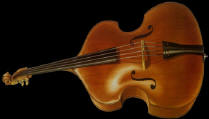|
Dances - Folk Dance
FOLK DANCE
PRATHAMA (FIRST
YEAR)
PRACTICAL
M.M. : 200
1.
Simple
Physical exercises
on rhythm
of Taal-Kaharwa, Khemta and
Dadra.
2.
Chali
Nrittya
(Manipur
Style)
3.
Kartaali Nrittya.
4.
Tippri
Nrittya.
5.
Karma
Nrittya
(Uttar
Pradesh)
6.
Ghasiyari
Nrittya
(Uttar
Pradesh)
7.
One
composition
based
on
Folk
Style
in
Ravindra
Sangeet.
Note
:-
There
shall
be
no
Theory
paper
in
Prathma-First
Year
(Folk
Dance).
FOLK DANCE
PRATHAMA
PRACTICAL
M.M.-200
1.
Simple physical exercises
on Rhythm-Kaharva
, Khemta
and
Dadra
Taal
(Exercise of
Head, Neck,
Shoulders, Elbow,
Arms, Wrist,
Finger, Waist, Hips, Knees, Legs, Feet,
Heels, Stomach and
eyes).
(a)
Footwork (b) Stepping (c) Waist Movement
(d) Hand
Movement (e) Chest
Movement (f) Head Movement (g) Eye Movement
(h) Body Molding (i) Step
Dancing
2.
Chali
Nrittya
(
Manipur
Style)
3.
Kartali Nrittya
4.
Tipri
Nrittya
(Uttar
Pradesh)
5.
Lezim
Nrittya
(Advance
for
Exercise)
6.
Dhamali
Nrittya
(Surma
Velly)
7.
Santhal
Nrittya
(Bihar)
8.
Garba
Nrittya
(
Gujarat)
9.
Ghasiary
Nrittya
(
Uttar
Pradesh)
10.
Lili
Ghori
(Rajasthan)
THEORY
M.M.-100
1
Knowledge of
any three
of the
second years
dances their
instruments, costumes and
back grounds.
2
Knowledge of Taal-Roopak,
Jhaptal, Choutal, Kaharva, Dadra and
Khemta.
3
Definition of
Folk dance
and Classical
Dance their
similarity and differences.
4
Basic
Knowledge
of
Folk
Dance
of
U.P.
5
Detailed
knowledge
of
the
folk
dance
of
Kumaun
Region.
6
Classification
of
Musical
instruments
used
in
Folk
Dance.
7
Life
sketch
of
any
one
of
the
following:-
(a)
Udai Shankar
(b)
Shanti
Vardhan
FOLK DANCE
MADHYAMA
PART-I
PRACTICAL
M.M.-200
1.
Advance
exercise based
on Taal
Kaharwa, Khemta,
and Dadra
Taal with chest
movement, eye
movement, body
molding and
step dance.
2.
Bihu
Nrittya
(Assam)
3.
Saira Nrittya
(U.P.)
4.
Dandi
Raas
Nrittya
(Rajasthan)
5.
Bodo
Nrittya
(Assam)
6.
Kabui Naga
Nrittya
(Nagaland)
7.
Ghoomer
Nrittya
(Rajasthan)
8.
Karma Nrittya
(Uttar Pradesh)
9.
Gidda
Nrittya
( Punjab)
10.
Knowledge
of
the
single
Hand
Mudras
according
to
Natya
Shastra.
THEORY
M.M.-100
1.
Knowledge of
any three
of the
Third Years
Dances, their
instruments, costumes
and back grounds.
2.
Knowledge
of
Taal:-
Kaharva,
Dadra, Khemta,
Trital, Daskosh
(No dance
in this
course on Trital
and Daskosh)
3.
Knowledge of
the Folk
dance and
classical dance-their similarity and
difference.
4.
An
outline
of
the
Folk
Dance
of
Gujarat
or
Manipur
or
Assam
5.
Definition
of
Nattya,
Nritta,
Nritya.
6.
Knowledge
of
the
single
hand
Mudras
according
to
Natya
Shastra.
7.
Life
sketches of
any one Guru
of Manipuri
Dance -
Guru Amubi
Singh, Raj Kumar Senarik
Singh.
8.
Making
of
paper
pulp.
FOLK
DANCE
MADHYAMA
PART- II
PRACTICAL
M.M.
–
200
2.
Bou
or
Badhu
Varan
Nrittya
(Bengal)
3.
Lavani Nrittya
(Maharashtra)
4.
Jhoomer
Nrittya
(Bihar,
Orissa)
5.
Tatina
Nrittya
(
Himachal
Pradesh)
6.
Thali Nrittya (Uttar
Pradesh
)
7.
Lezim
Nrittya
(
Advance
for
Exercise)
8.
Garaj
Nrittya
(
Uttar
Pradesh)
9.
Thoibi
Nrittya
(
Manipur)
10.
Knowledge
of
paper
pulk
work.
11.
Knowledge
of
double
hand
Mudras
according
to
Natya
Shastra.
FOLK DANCE
MADHYAMA
PART- II
THEORY
M.M.-100
1.
Knowledge of
any three
of the Madhyama Part
II Dances,
their instruments, costumes and
back grounds.
2.
Knowledge of single and double
Hand Mudras according to Natya
Shastra.
3.
Knowledge
of
Nava-Ras
4.
Knowledge of the Folk Dance
and Classical Dance- their similarity and
difference
5.
An
outline
of
the
Folk
Dance
of
Uttar
Pradesh
or
Gujarat
or
Rajasthan
6.
Life
sketch
of
any
one
of
the
following
:
a.
Rabindra
Nath
Tagore.
b.
Smt.
Rukmini
Devi.
7.
Knowledge
of
Taal-Dhamar,
Deepchandi,
Choutaal
and
Ektaal.
8.
Basic
knowledge
of
Indian
Classical
Dances.
9.
A
knowledge of the origin of Dance according to Natya Shastra of
Bharat.
10.
Knowledge
of
the
following
terms:-
Laya,
Sangeet,
Tandava,
Lasya,
Chhand, Taal,
Thekha,
Nattya
Nrittya
and Nritya.
FOLK DANCE VISHARAD
PART -
I
PRACTICAL
M.M.-200
1.
Kummi-Kollattam
Nritta
(Tamil
Nadu)
2.
Holi Nritta
(U.P.)
3.
Ojha Nritta
(Assam-Cachar)
4.
Gidda
Nritta
(Punjab)
5.
Khomba-Thoibi
Nritta
(Manipur)
6.
Gajan Nritta
(Bengal)
7.
Naga Nritta
(Kabui-Nagaland)
8.
Chheran
Nritta
(Mizoram)
9.
Maibi Nritta
(Manipur)
FOLK DANCE VISHARAD
PART -
I
THEORY
M.M.-100
1.
Knowledge
of
any
three
of
the
Fourth
Year
Dances,
their instruments, costumes
and backgrounds.
2.
Knowledge
of
Tala-Trital, Ektal,
Ada
Choutal.
(No
dance
on
the
above tals).
3.
An
outline
of
the
Classical
Dances.
4.
Knowledge
of
double
hand
Mudras
according
to
Natya
Shastara.
5.
Make-up
of
the
folk
dancers
while
dancing
at
their
home
place.
6.
Life
sketches
of
Guru
Gopi
Nath,
Smt.
Rukmini
Devi
Arundale.
7.
Marking
of
Masks.
8.
Folk
dances
of
India
and
their
classification.
FOLK DANCE VISHARAD
PART- II
PRACTICAL
M.M.-200
1.
Bhangra
Nritta
(Punjab)
2.
Kurubanjee
Nritta
(Tamil
Nadu)
3.
Pung
Cholom
Nritta
(Manipur)
4.
Chhou
Nritta
(Bengal)
5.
Bhotal Nritta
(Assam)
6.
Pandau
Nritta
(U.P.)
7.
Kachhi
Ghori
Nritta
(Rajasthan)
8.
Baul Nritta
(West
Bengal)
9.
Ta-Tang
Nritta
(Manipur)
10.
Students are required to compose dance on Kaharva and Khemta talas at the
time of Practical Examination on any two of the
following:-
(a)
Makhan Chori
(b)
Kaliya
Daman
(c)
Pea-cock
(Mayur Nritya)
(d)
Gend-Khel
(Kuadak
Krida)
(e)
Fish-catching
(Matsa
Akhet)
(f)
Harvesting
(Khaliyan)
FOLK DANCE VISHARAD
PART -
II
THEORY
M.M.-100
1.
Knowledge of
any three
of the
Fifth Year
Dances, their
instruments, costumes and back grounds.
2.
Explain
Abhinaya
with
its
four
parts.
3.
Definition
of
Navaras,
Sangit,
Nritya-Natya
Ballet,
Opera.
4.
Contribution of
Rabindranath Tagore
to the
folk dance
and folk
songs.
5.
Explain
Natya
Shastra
and
Abhinaya
Darpan.
6.
The
Rassas
according
to
Shastra
and
their
explanation.
7.
Relation
between
Folk
dance
and
Classical
Dance.
8.
Life
sketch
of
Bindadin
Maharaj.
9.
Manner
of
dressing
of
the
Folk
Dancers
at
the
time
of
their
festival.
10.
Folk
Dances
of
India
and
their
classification.
|

